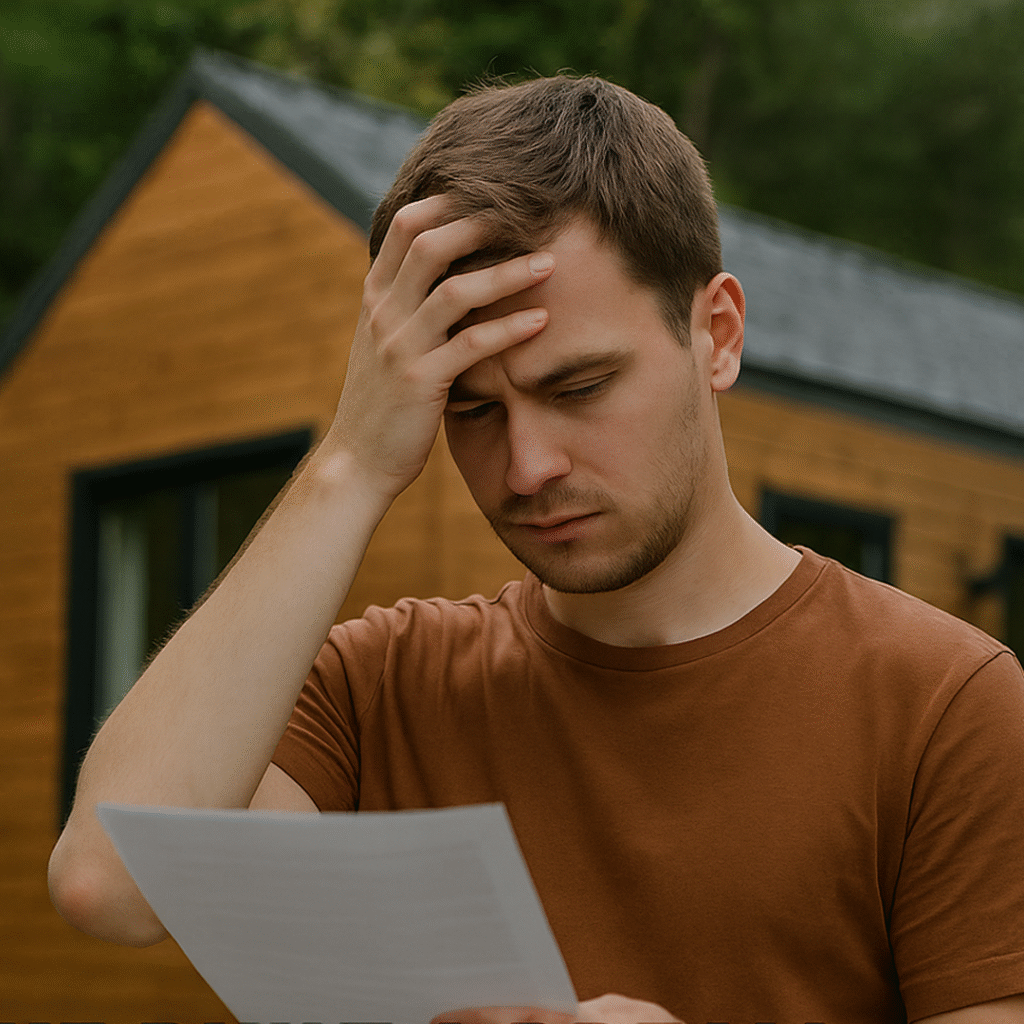Ryan Caldwell, 29, had one goal: escape the grind, live sustainably, and build something truly his own. Nestled in the hills of northern Vermont, he crafted a stunning, off-grid tiny home from reclaimed wood and solar panels. His DIY journey gained traction online, inspiring hundreds to consider downsizing.
But that dream came crashing down with a single knock on the door.
A Viral Build, Then an Unexpected Inspection
Ryan’s project drew admiration from followers, green living advocates, and even major sustainability influencers. His walkthrough videos attracted over 3.2 million views. But the attention also brought the local authorities.
During a routine check triggered by a neighbor’s anonymous tip, environmental inspectors arrived to review zoning compliance and sanitation systems. What they found underneath the home triggered immediate legal action.
Environmental Violation With Serious Consequences
The inspectors discovered an unpermitted, makeshift septic system draining directly into a protected wetland zone—violating both state and federal environmental laws. Not only was the system illegal, but it posed a serious contamination risk to local ecosystems.
Ryan was served an immediate notice of violation, followed by a $68,000 fine and a mandatory environmental remediation order. His property was also flagged for eviction until the site was restored to code-compliant condition.
Public Support Turns to Outrage
Once the news broke, Ryan’s story spread like wildfire. Initial sympathy quickly gave way to backlash. Commenters accused him of being careless and irresponsible, using “green living” as a shield for poor planning.
Forums and social media threads debated the ethics of DIY building without professional guidance. Critics argued that projects like Ryan’s give tiny home advocates a bad name, while others blamed local governments for making sustainable housing inaccessible.
From Mistake to Mission
Instead of disappearing from public view, Ryan launched a new project: “Build Clean.” It’s a video series chronicling his efforts to undo the damage, work with licensed environmental engineers, and guide others through proper permitting and sustainable construction practices.
The first episode—“I Broke the Law in My Dream Tiny Home”—garnered 1.4 million views in its first week.
Ryan also released an open-source toolkit for legal off-grid builds, including septic alternatives like composting toilets, greywater filtration, and certified off-grid waste solutions.
Key Lessons for DIY Home Builders
Ryan’s story now serves as a cautionary guide for aspiring tiny home builders. Experts recommend:
- Always check for wetland restrictions, protected zones, and soil suitability
- Hire licensed professionals for septic, electrical, and structural work
- Use eco-certified products and systems backed by state-level approval
- Understand that off-grid doesn’t mean off-regulation
The importance of securing local building permits, environmental clearances, and utility integration waivers cannot be overstated—even in remote areas.
The Road to Redemption
Despite the initial fallout, Ryan is now seen by many as a voice for responsible sustainability. His mistakes, while costly, have opened an important conversation about the risks of skipping legal steps in alternative housing.
As more people seek affordable and eco-friendly alternatives to traditional living, stories like Ryan’s underscore the fine line between innovation and liability.
Today, the tiny home still stands—temporarily vacated, under mandated correction—but its builder is determined to do things right.
